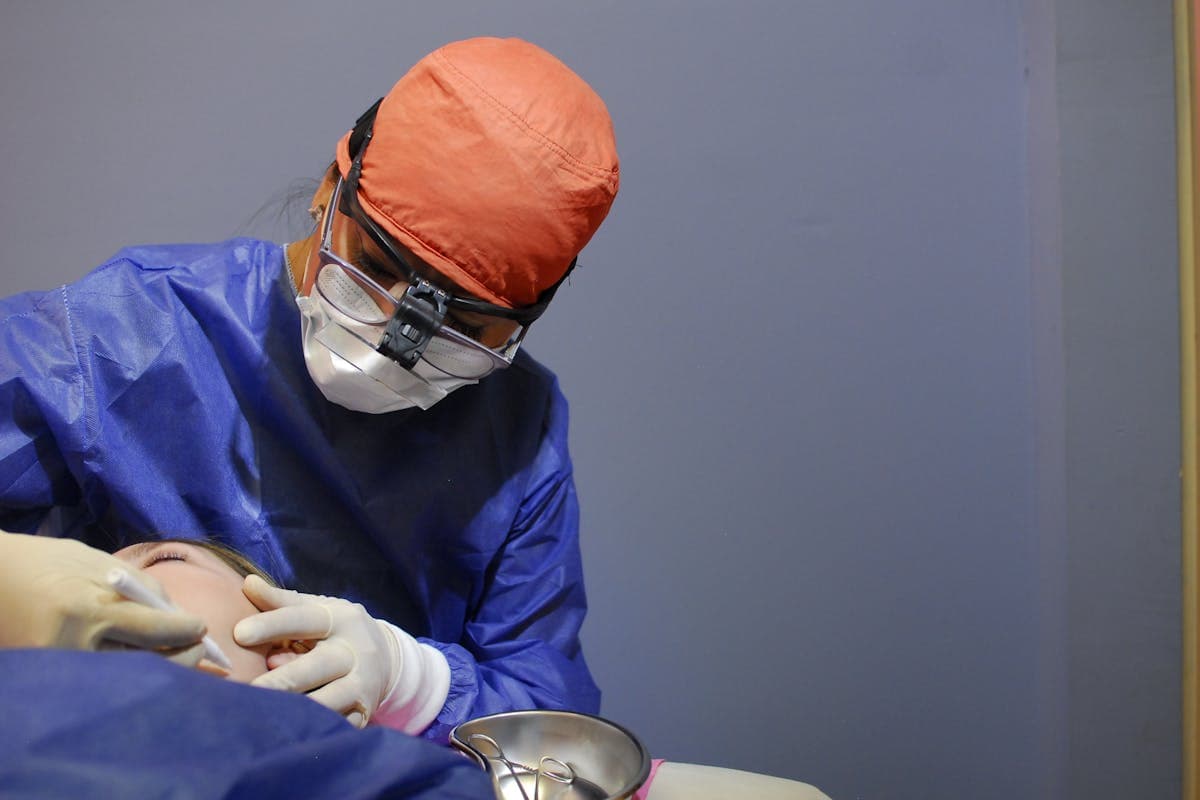The correlation between Temporomandibular Joint Disorder (TMJ) and vision problems is an intriguing area of medical study. It is established that TMJ, a condition affecting the jaw joint, can result in myriad symptoms including pain, muscle stiffness, and ear discomfort. However, the possibility of TMJ influencing vision, due to the trigeminal nerve’s role in eye muscle control and facial sensation, is a topic that requires further exploration. Insight into this connection may not only broaden our understanding of TMJ’s impact but also offer potential pathways towards more thorough treatment approaches.
Understanding Temporomandibular Joint Disorder
While it may not be widely recognized, Temporomandibular Joint Disorder, often abbreviated as TMJ, plays an essential role in an individual’s overall health and well-being. This joint, located where the mandible (lower jaw) meets the temporal bone of the skull, is vital to basic functions such as chewing and speaking. Misalignment of this joint, often referred to as jaw alignment, can cause significant discomfort and other health issues. The TMJ can become inflamed due to various factors, including injury, arthritis, or stress, resulting in joint inflammation. This inflammation can cause a range of symptoms and complications, including potential vision problems. Understanding this disorder, its causes, and its consequences is important in managing TMJ effectively and maintaining overall health.
Common Symptoms of TMJ
Despite their diverse nature, the symptoms of Temporomandibular Joint Disorder are often distinct and identifiable. An individual suffering from TMJ typically experiences jaw pain, a hallmark symptom of this disorder. This pain can be constant or sporadic, and can range from mild to severe. It is primarily localized in the jaw, but can radiate to the neck and shoulders. Facial discomfort is another common symptom that can manifest as a dull ache or a feeling of pressure around the jaw and cheeks. Other symptoms of TMJ may include difficulty in opening the mouth wide, jaw locking, and abnormal jaw movements. These symptoms can interfere with daily activities such as eating, talking, and even sleeping, greatly impacting an individual’s quality of life.
Exploring TMJ and Vision Connection
We now turn our focus to the interrelation between temporomandibular joint disorders (TMJ) and vision issues. The intricacies of this relationship are defined by a myriad of physiological interactions that can manifest in potentially disruptive visual symptoms. Detailed examination of this connection can help us comprehend its impact on a patient’s overall health.
TMJ-Vision Link Explained
Although it may not be immediately apparent, there exists a significant connection between temporomandibular joint disorders (TMJ) and vision problems. This connection manifests due to the proximity of the TMJ to the optic nerves and the interconnectedness of the body’s muscular and neural systems.
Here are some key points to understand this link: - TMJ symptoms include jaw pain, headaches, and facial discomfort, which can indirectly affect vision. - Vision therapy may help alleviate symptoms by improving eye muscle coordination and reducing strain. - The trigeminal nerve, which provides sensation to the face and controls jaw movement, also has connections to the eye muscles. TMJ disorders can irritate this nerve, potentially causing vision problems. - TMJ-related tension in facial and neck muscles may affect eye alignment, leading to blurred or double vision.
Possible Vision Issues
What kind of vision problems can TMJ disorders potentially induce? The association between TMJ and vision pertains primarily to visual disturbances and eye strain. The trigeminal nerve, which provides sensation to the face and controls jaw movement, interacts with nerves that affect vision. When TMJ dysfunction occurs, this interaction may be disrupted, leading to visual disturbances. Patients might experience blurred or double vision, sensitivity to light, or difficulty focusing. Additionally, TMJ disorders can cause muscle tension and misalignment in the neck and face, which may result in eye strain. As a result, the intricacy of the neuromuscular system implies that TMJ disorders can, indeed, lead to a range of vision issues, necessitating an extensive approach for diagnosis and management.
How TMJ Affects Vision
While it may not be readily apparent, there is a connection between temporomandibular joint disorders (TMJ) and vision problems. TMJ, a condition affecting jaw alignment, can trigger an array of visual disturbances.
- TMJ can cause muscle tension around the jaw and face, extending to the eyes and causing discomfort or blurred vision.
- The trigeminal nerve, which provides sensation to the face and controls jaw movements, also influences the eyes. TMJ can impact this nerve, leading to eye-related issues.
- TMJ-related headaches can result in visual disturbances such as sensitivity to light or aura.
- Stress from coping with TMJ can exacerbate vision problems, leading to eye strain or difficulty focusing.
Understanding these connections can help in the effective diagnosis and treatment of both TMJ and vision issues.
Case Studies Linking TMJ to Vision Problems
In the domain of medical research, several case studies have unequivocally underscored the link between TMJ and vision problems. A significant proportion of patients with TMJ disorders have reported diverse forms of vision impairment, including blurred vision, sensitivity to light, and difficulty focusing. These case studies have elucidated the relationship between TMJ-related stress on the trigeminal nerve and the subsequent impact on ocular function. The trigeminal nerve, with its proximity to the optic nerve, transmits pain signals that can cause a reflexive spasm of the muscles controlling eye movement. This physiological response can manifest as vision impairment. These findings lend credence to the assertion that TMJ disorders can negatively influence vision, accordingly necessitating further investigation into this correlation.

Treatment Options for TMJ-Related Vision Issues
Often, addressing TMJ-related vision issues involves a multidisciplinary approach that encompasses dental treatment, physiotherapy, and sometimes even psychological therapy. This integrated strategy is designed to provide thorough care, addressing not only the physical symptoms but also the emotional aspects of the condition.
The following treatment options can be considered:
- Dental Treatment: This may involve the use of mouthguards or braces to correct bite alignment issues causing TMJ.
- Physical Therapy: Specific exercises can strengthen jaw muscles, improve flexibility and promote better jaw function.
- Medication Management: This includes pain relievers, muscle relaxants, or anti-inflammatory drugs to control symptoms.
- Psychological Therapy: Stress and anxiety management helps patients cope with the discomfort and lifestyle changes associated with TMJ.
Proper diagnosis and personalized treatment plan are essential for effective relief from TMJ-related vision problems.
Preventative Measures for TMJ
How can one prevent Temporomandibular Joint Disorder (TMJ)? The implementation of lifestyle adjustments and stress management techniques can play a significant role in TMJ prevention. Lifestyle adjustments may include maintaining a balanced diet and regular exercise, which promote overall health and indirectly aid in preventing TMJ. Specific exercises can also be performed to strengthen the jaw muscles and improve joint flexibility. Stress management, on the other hand, is essential as stress can cause muscle tension, including in the jaw area. Techniques such as deep breathing exercises, yoga, and meditation can be beneficial. Additionally, avoiding excessive jaw movements, such as yawning widely or chewing gum, can also help prevent TMJ. Ultimately, these preventative measures can mitigate the risk of developing TMJ and its potential vision problems.
When to Consult a Professional
The identification of TMJ symptoms is often the first step towards seeking professional help. Given the potential connection between TMJ and vision problems, it is essential to consult a healthcare provider when symptoms persist or worsen. Clinical intervention becomes critical when preventative measures fail to alleviate the condition.
Recognizing TMJ Symptoms
Could you be experiencing symptoms of Temporomandibular Joint Disorder (TMJ)? Recognizing TMJ symptoms is essential for early intervention and effective management. TMJ often manifests as an array of symptoms, including jaw pain and facial tension. However, these symptoms can be easily overlooked or attributed to other causes.
TMJ symptoms to look out for include:
- Persistent jaw pain, especially when moving the jaw or chewing
- Facial tension that does not ease with rest or relaxation techniques
- Difficulty or discomfort while opening and closing the mouth
- Clicking or popping sounds in the jaw when moving it
These symptoms should not be ignored. Persistent jaw pain and facial tension can greatly affect your quality of life and may be indicative of TMJ.
Seeking Medical Assistance
Recognizing the symptoms of TMJ is only the first step in dealing with this disorder. Should you notice persistent discomfort, especially in conjunction with visual disturbances, immediate medical evaluation is highly recommended. It is essential to consult with a healthcare provider who can accurately diagnose your condition, and if necessary, facilitate a specialist referral. These professionals are adept at distinguishing TMJ from other potential causes of your symptoms and can guide you towards appropriate treatment. Early intervention can mitigate progression, alleviate pain, and prevent potential vision complications. Remember, the path to relief from TMJ involves recognizing your symptoms, seeking prompt medical assistance, and engaging in a thorough treatment plan guided by professional medical advice.
Frequently Asked Questions
Can Tmj-Related Vision Problems Lead to Permanent Blindness?
While TMJ symptoms may cause temporary vision impairment due to muscle tension and nerve involvement, there’s no clinical evidence suggesting these conditions could directly lead to permanent blindness. A healthcare professional should assess persistent issues.
Are There Natural Remedies for Treating Tmj-Related Vision Issues?
Natural remedies for TMJ-related vision issues include herbal supplements, which may reduce inflammation and promote healing. Acupuncture therapy is another option that may alleviate symptoms by improving blood flow and reducing muscle tension.
How Does Stress Impact TMJ and Associated Vision Problems?
Stress can exacerbate TMJ disorders by increasing muscle tension in the jaw, potentially leading to vision disturbances. Hence, stress management techniques could be essential for mitigating TMJ-related vision problems.
Are Children at Risk for Developing TMJ and Vision Problems?
Yes, children can be at risk for developing TMJ. Childhood symptoms may include jaw pain or misalignment, which may indirectly contribute to vision problems. However, direct causality between TMJ and vision issues is not established.
Is There a Correlation Between TMJ and Other Eye Disorders Like Glaucoma or Cataracts?
Research indicates no direct correlation between temporomandibular joint disorder (TMJ) and eye conditions like glaucoma or cataracts. However, TMJ symptoms can cause eye strain, potentially exacerbating existing vision problems.


